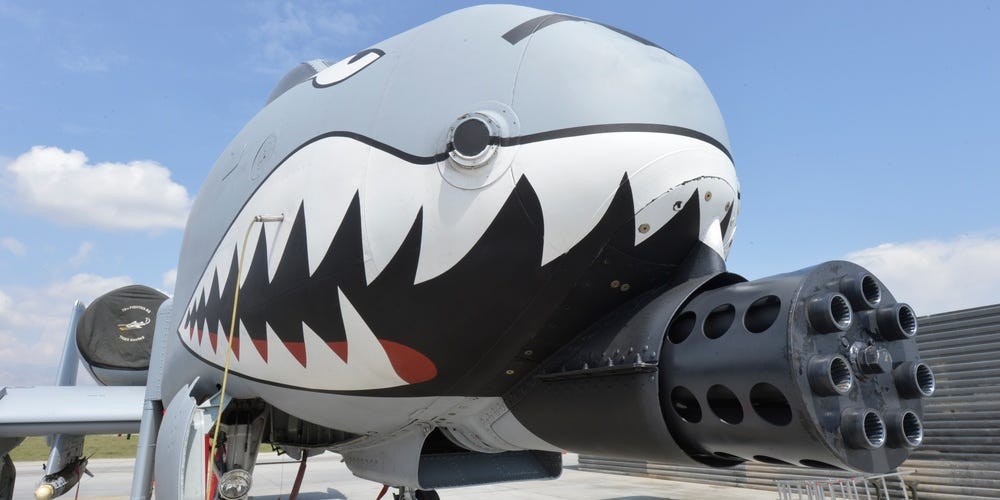- A US Air Force test showed that the A-10 attack aircraft, which is over 40 years old, can take out even modern tanks with its gun.
- The air service tested the attack aircraft against main battle tank surrogates with explosive reactive armor.
- The plane's GAU-8 Avenger cannon can fire around 3,900 rounds per minute.
The US Air Force demonstrated that the A-10 Thunderbolt II, a close-air support mission plane that has been in service for over 40 years, is able to knock out modern tanks equipped with armor improvements with its powerful cannon.
In February, the Air Force carried out a first-ever test at the Nevada Test and Training Range in which pairs of A-10Cs unleashed armor-piercing incendiary rounds against up-armored surrogate main battle tanks with Explosive Reactive Armor, a kind of protection for modern armored vehicles designed to reduce the damage incoming rounds cause, the Air Force's 53rd Wing said in a statement last Friday.
In the aftermath of the test, analysts examined videos, photos, and the tanks themselves to determine the damage inflicted by the Warthog, and they determined that the vehicles had been rendered inoperative.
The Air Force said the test "proved that modern-day armored vehicles equipped with Explosive Reactive Armor are vulnerable to the A-10C Thunderbolt II's" gun.
The A-10 Thunderbolt II, often called the "Warthog" and sometimes seen with painted teeth on its nose – is probably most famous for its GAU-8 Avenger, an impressive 30 mm cannon protruding from the nose of the plane that can fire 3,900 bullets per minute, producing a loud "BRRRRT" noise.
"A typical A-10 gun employment uses 120 rounds, which means an A-10 is capable of employing fires on nine to ten targets before exhausting its gun munitions," Maj. Kyle Adkison, the 422nd Test and Evaluation Squadron A-10C division commander, said in an Air Force press release. "Against large fielded forces, A-10 formations are capable of engaging nearly 40 armored vehicles with 30 millimeter munitions," he continued. "That's a significant amount of firepower."
The Air Force statement said the "A-10 can continue to deliver massive rapid firepower with devastating effects on enemy vehicles in a contested environment," but despite the Warthog's capabilities, the Air Force has been trying to retire the plane since 2015 to free up funds for other projects. Its efforts, however, have been repeatedly thwarted by Congress.
"No member of Congress wants to lose, or stand by and silently lose, a fleet of aircraft or a capability from their state or district, which, of course translates to jobs," Deborah Lee James, the 23rd secretary of the Air Force told Military.com in 2020.
The A-10 was first introduced in the 1970s and is the Air Force's first aircraft designed specifically to provide close-air support to ground forces. The service said it plans to continue testing other munitions against up-armored vehicles.
